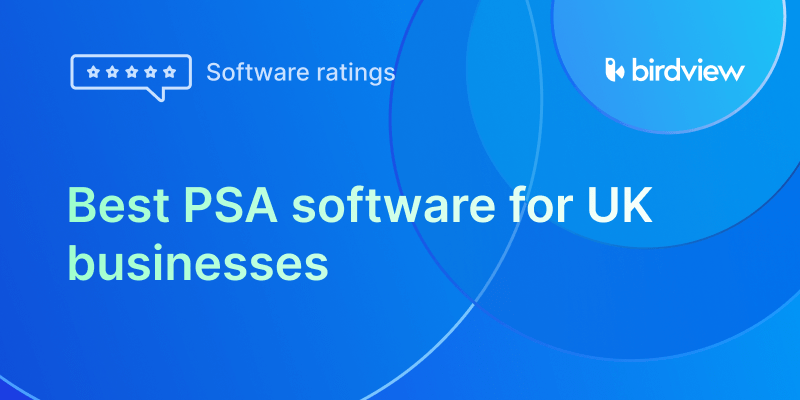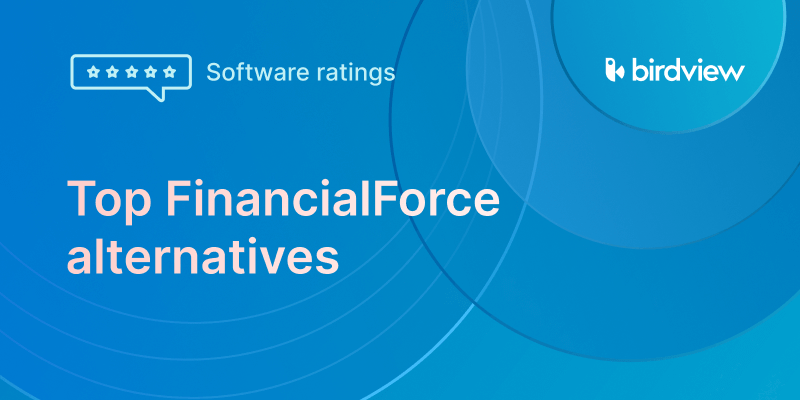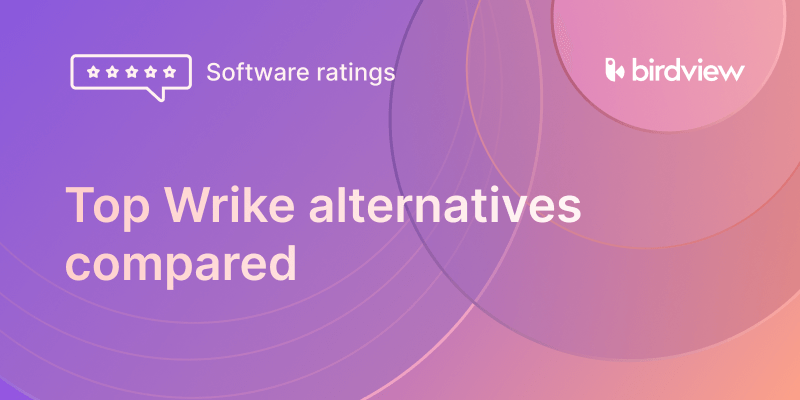Harnessing the Power of Generative AI and Professional Services Automation to Automate Project Proposals
Creating a successful project proposal can be the gateway to unlocking exciting opportunities and essential funding for your projects. Whether aiming to win a new client or get the green light for a departmental initiative, a well-crafted proposal spells the difference between a yes and a no.
What is proposal automation?
In essence, a project proposal is a detailed pitch outlining your project’s framework, goals, and how you plan to achieve them–it’s your chance to convince stakeholders that your project is worthwhile and that you have a solid plan to execute it.
In the competitive realm of service companies, the ability to swiftly and effectively generate project proposals can be a game-changer. Crafting detailed, compelling proposals is often a painstaking process, fraught with challenges that can delay submission and impact the quality of the final document. This is where the power of automation and artificial intelligence comes into play, transforming a traditionally labor-intensive process into a streamlined, efficient operation.
By combining generative AI tools like ChatGPT and professional services automation (PSA) software like Birdview PSA, service companies can significantly reduce the time spent on routine proposal tasks, allowing them to focus more on strategy and less on administration.
This article will explore the nuts and bolts of what makes a project proposal excellent and plentiful. We’ll cover all bases, from structuring your document to choosing the right words to captivate your audience. Plus, we’ll explore how leveraging modern tools like Birdview PSA can streamline and automate the project proposal creation process. So, grab your notes and prepare to craft a proposal that stands out from the pack!
Components of an Effective Project Proposal
A well-constructed project proposal is your first step toward securing client interest or funding for a project. It outlines your vision, approach, and readiness to handle a project’s demands. Here are the essential components that make a project proposal effective:
Title Page. The title page serves as the face of your proposal. It should include a clear and concise title that immediately informs the reader about the project’s nature. This is your first opportunity to make an impression, so the title should be compelling and precise, ideally capturing the essence of the project in just a few words.
Executive Summary. This section is critical to the proposal, as it’s often the only part many decision-makers read thoroughly. The executive summary should succinctly capture the essence of the project, including the key benefits and the proposed solution, distilled into a few short paragraphs. It should be compelling enough to entice the reader to delve deeper into the proposal’s details.
Problem Statement. Here, you clearly and precisely define the problem that the project aims to solve. This section should resonate with the reader, clarifying why the issue is essential and deserving attention and resources. It sets the stage for proposing your solution by highlighting the existing gap or need.
Project Objectives. In this part, outline the clear, measurable goals that the project aims to achieve. These objectives should align with the client‘s needs and expectations, demonstrating how the project will deliver specific outcomes. Setting clear goals helps to keep the project focused and provides benchmarks against which success can be measured.
Project Scope. The project scope delineates the boundaries of the project activities. It defines what will and will not be included, helping to manage the client’s expectations and mitigate scope creep. This clarity helps ensure that both parties agree on the project’s delivery.
Methodology. This section describes your approach and the strategies you will use to achieve the project objectives. It may include the project’s phases, techniques, and tools, detailing how each component will contribute to the overall goal. This shows your preparedness and reassures the client of your competency in handling their project.
Timeline. The timeline outlines key milestones and deadlines for the project. It should provide a realistic schedule for when each phase will be completed. This helps set expectations and aids in the planning and allocation of resources.
Budget. This section presents a detailed financial plan outlining all expected costs and resource allocation. The budget should be comprehensive, transparent, and realistic, covering everything from materials and labor to contingencies. Precise budget planning demonstrates your stewardship of the project‘s financial resources and reduces the likelihood of unexpected overruns.
Each component of the project proposal plays a pivotal role in convincing stakeholders of the viability and necessity of the project. When crafted carefully, your proposal becomes a powerful tool in securing the projects your service company needs to thrive.
The Traditional Proposal Process
Creating project proposals is a cornerstone activity for service companies, but the traditional method of developing these documents is often exceedingly time-consuming and heavily reliant on manual processes. This is particularly true when constructing critical sections such as the problem scope, executive summary, timeline, and budget. Each of these components requires a high level of detail and precision, which can significantly extend the duration and complexity of the proposal preparation.
Common Bottlenecks
- Resource Intensive: The manual nature of these tasks means they are resource-intensive, often requiring the dedicated attention of skilled staff members. This can divert attention from other critical business activities.
- Prone to Human Error: Manual data entry and calculations, often used with Excel or other spreadsheets, are susceptible to errors, leading to underestimations or other costly mistakes in the proposal.
- Scalability Issues: As the volume of proposals increases, the manual processes become a bottleneck, making it difficult to scale operations effectively without compromising quality or turnaround times.
These aspects of the traditional proposal process highlight the inefficiency and potential for improvement. Automating these areas through tools like Birdview PSA can speed up the process, reduce errors, and ensure consistency across proposals. In subsequent sections, we will explore how integrating modern technologies and AI automation tools can transform these laborious tasks into streamlined, efficient processes.
Proposal Automation: Leveraging Generative AI in Drafting Key Proposal Components
The advent of generative AI has introduced a revolutionary tool in the arsenal of proposal writers, particularly in crafting the more nuanced and critical sections such as the Problem Scope and Executive Summary. These AI tools, including advanced solutions like AI video generator, can produce content that aligns with specified criteria, dramatically reducing the time and effort required in these tasks.
Enhancing the Problem Scope and Executive Summary with AI
Problem Scope
Generative AI can draft the problem scope by inputting data about the client’s industry, specific challenges, and project objectives. AI can then generate a draft that outlines the problem in a structured and articulate manner. The more data you feed to the generative AI tool, the more accurate the output will be.
Sample Prompt for AI:
“Generate a problem scope for a proposal aimed at a telecommunications company facing the following challenges:
- Challenge A
- Challenge B
- Challenge C
Use a professional tone. Utilize bullets. Avoid using jargon.”
Executive Summary
This section can similarly be crafted using generative AI by feeding it key points about the project, including the problem statement, objectives, and anticipated impact. The AI can then produce a concise, compelling summary that captures the essence of the proposal and engages stakeholders.
Sample Prompt for AI:
“Create an executive summary for a project that proposes an innovative cloud solution to enhance data security and operational efficiency for a financial services firm.
Problem statement: {describe it here}
Project objectives: {describe it here}
Anticipated impact: {describe it here}
Use a professional tone. Utilize bullets. Avoid using jargon.”
Using generative AI in this manner streamlines the creation process and ensures consistency and adherence to high-quality standards in the narratives being produced.
Using Professional Services Software for Proposal Automation
Automating proposals with professional services software can be a game-changer for project managers. Automating proposal creation and approval processes ensures consistent, accurate, and compelling proposals that boost your team’s efficiency. With automated templates and real-time collaboration, you can reduce turnaround times and tailor proposals to clients’ unique needs, giving your team a competitive edge. Let‘s review some key project proposal components that will benefit from automation.
Proposal Automation: Utilizing PSA Software for Timeline and Budget Creation
Professional service automation software like Birdview PSA is designed to automate the creation of project timelines and budgets, making proposal creation more manageable and significantly more efficient. The platform’s project templates and tools for managing project plans and estimates are particularly useful in adapting to project scope and requirements changes.
Streamlining Timeline and Budget with Project Management Software
Automated Timeline Creation
Birdview PSA is project management software that offers project templates that include predefined timelines suitable for various projects. These templates can be customized based on specific project requirements. When project scopes change, Birdview PSA allows for quick adjustments to the timeline, ensuring that all stakeholders are up-to-date with the new schedule.
Budget Automation
The platform also supports the creation of detailed budgets for both fixed-cost and hourly-rate activities. This feature ensures that all financial aspects of the proposal are accurately captured and remain aligned with the project’s scope and resources.
Managing Changes
Birdview PSA excels in scenarios where project requirements shift. Its integrated features enable project managers to update deliverable schedules and budgets in real time. This dynamic capability ensures that proposals remain relevant and accurate, reflecting any new conditions or constraints that may arise during the project lifecycle.
By harnessing Birdview PSA‘s functionalities, companies can reduce the administrative burden associated with manual updates and recalibrations of project timelines and budgets, thus enhancing efficiency and responsiveness to changes during the proposal phase. This integration of technology not only speeds up the proposal creation process but improves its precision and adaptability to ever-changing project demands.
Generating Project Proposal Document
Once you have all key project proposal elements ready, it‘s time to combine them.
Birdview PSA and similar software products can automate proposals by populating sections of the predefined proposal template document based on information previously entered into the system. For instance, when project managers input project scope, executive summary, project timeline, and budget data, Birdview automatically integrates this information into the corresponding sections of the proposal document.
Automated Proposal Updates
The related proposal sections can be automatically adjusted as project details are updated in Birdview PSA. This dynamic link between project data and the proposal document ensures the content remains current and accurate, reflecting the latest project parameters.
Benefits of Proposal Automation
Time Savings
Automating the project proposal creation significantly saves time, a valuable asset for any service company aiming to increase efficiency and productivity. By automating the drafting of proposals with predefined templates and dynamically filling in project details such as timelines, budgets, and scope, PSA software eliminates the need for manual data entry and constant revisions. This automation reduces the proposal preparation process from days to hours, allowing teams to respond more quickly to new opportunities and dedicate more resources to client engagement and strategic project planning. As a result, companies can handle a higher volume of proposals without sacrificing quality, giving them a competitive edge in securing new business.
Error Reduction
By automating data entry across proposal documents, Birdview PSA and similar products minimize the risks of human errors. This automation ensures that all numbers, dates, and project details are consistent and accurate, enhancing the proposal’s credibility.
Consistency Across Proposals
When multiple proposals are being created simultaneously, maintaining consistency in format and content can be challenging. Birdview PSA‘s template-based approach ensures that all proposals adhere to a uniform standard, projecting professionalism and attention to detail.
Final Words
Using Birdview PSA and similar PSA tools for proposal automation saves time and enhances proposal quality. Automated proposals are typically more structured, accurate, and tailored to meet specific client needs, which can significantly improve the chances of winning new contracts. Additionally, the ease of updating proposals in real-time allows companies to respond swiftly to changing project requirements or client feedback, maintaining relevance and competitiveness in their proposals.
By leveraging the power of proposal automation through Birdview PSA, ChatGPT, and similar products, service companies can transform the labor-intensive process of proposal creation into a more strategic, efficient, and error-free endeavor. This technological advantage allows them to focus more on strategic engagement with clients and less on administrative tasks, ultimately driving business growth and enhancing client satisfaction.



